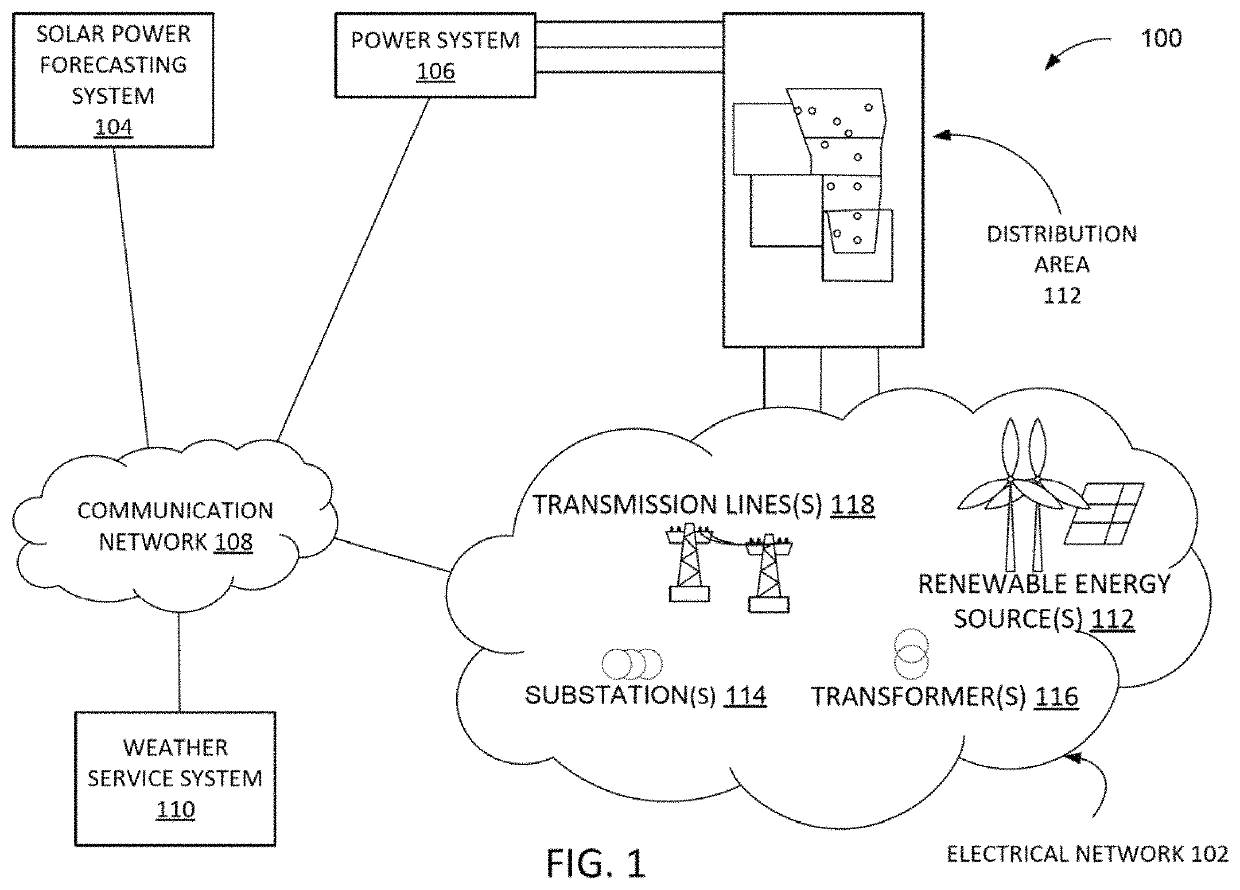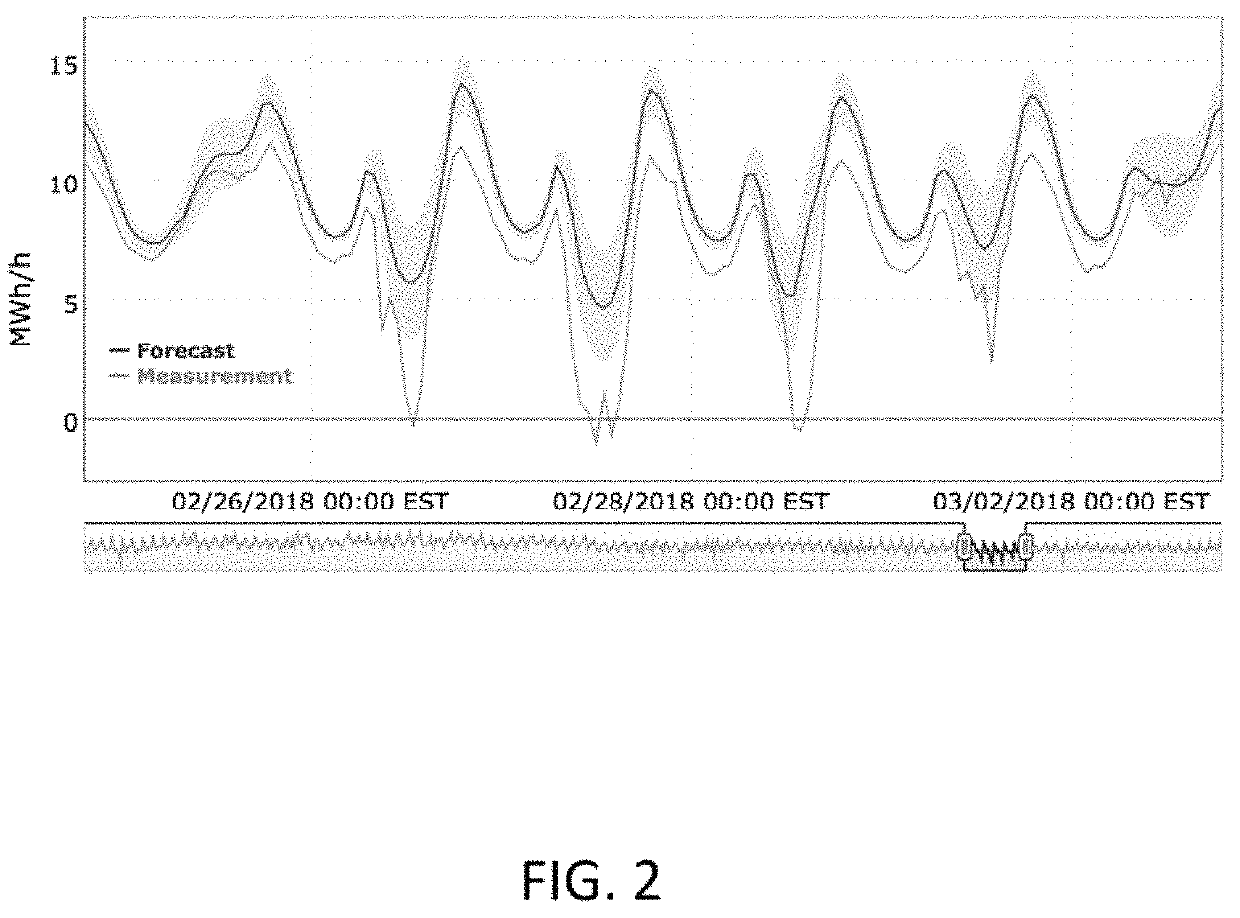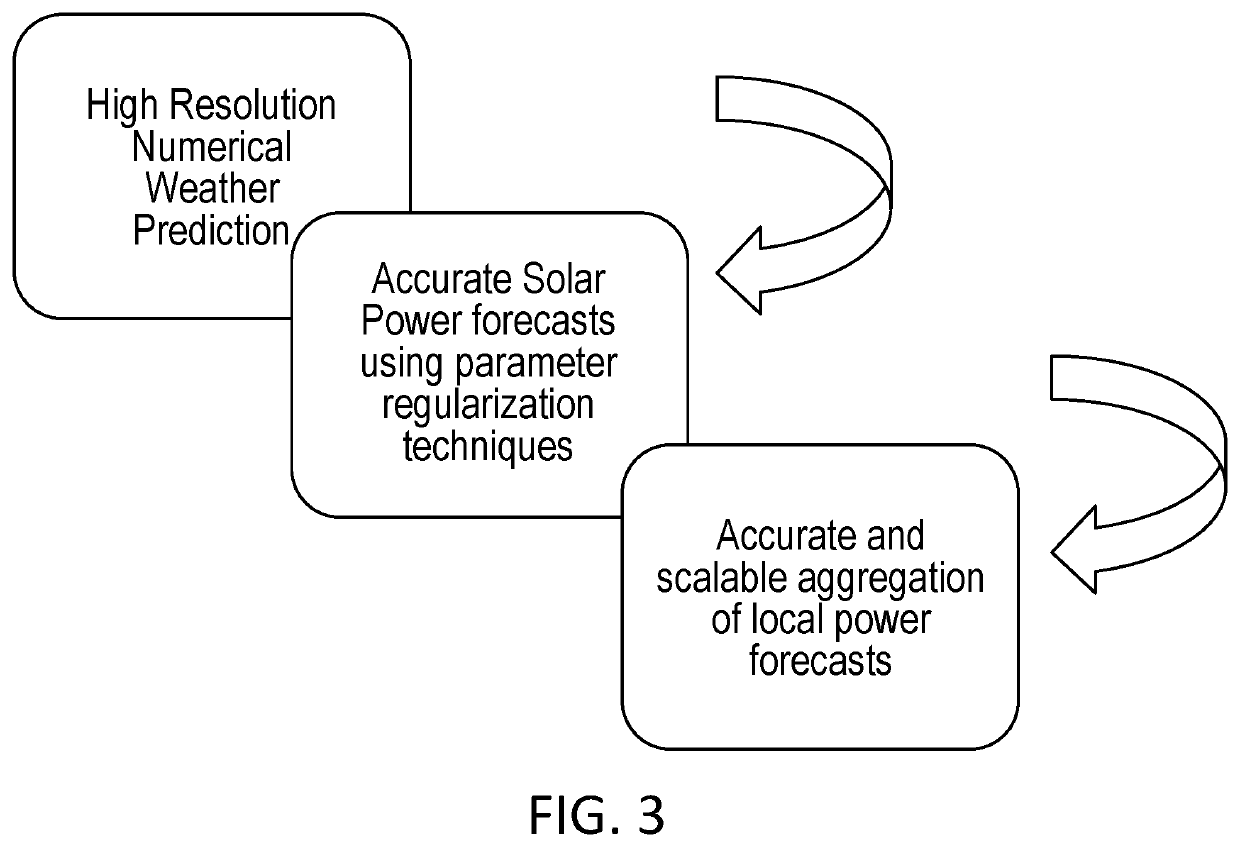Systems and methods for distributed-solar power forecasting using parameter regularization
a distributed solar and parameter regularization technology, applied in the field of distributed solar power forecasting, can solve the problems of compromising the computational efficiency of the models to achieve higher accuracy, not producing accurate forecasts, etc., and achieve the effects of reducing correlations, improving accuracy, and reducing parameters
- Summary
- Abstract
- Description
- Claims
- Application Information
AI Technical Summary
Benefits of technology
Problems solved by technology
Method used
Image
Examples
Embodiment Construction
[0025]Various embodiments described herein discuss forecasting net renewable power generation dispersed in a power distribution territory while making the power forecasting models computationally scalable and accurate. The process may produce accurate power forecasts to avoid unpredictable reverse power flows through power substations and improve computational efficiency of the models for achieving higher accuracy.
[0026]Solar power generation examples are discussed herein, where the net-generation includes both stand-alone PV (Photo-Voltaic) farms and roof-top PV installed by residential customers. In some embodiments, systems and methods discussed herein may be utilized to forecast net-generation of roof-top PV, stand-alone PV farms, or a combination of the two. For example, systems and methods discussed herein may be utilized to forecast net-generation of roof-top PV without accounting for stand-alone PV farms and / or other types of renewable energy assets (e.g., wind turbines).
[00...
PUM
 Login to View More
Login to View More Abstract
Description
Claims
Application Information
 Login to View More
Login to View More - R&D
- Intellectual Property
- Life Sciences
- Materials
- Tech Scout
- Unparalleled Data Quality
- Higher Quality Content
- 60% Fewer Hallucinations
Browse by: Latest US Patents, China's latest patents, Technical Efficacy Thesaurus, Application Domain, Technology Topic, Popular Technical Reports.
© 2025 PatSnap. All rights reserved.Legal|Privacy policy|Modern Slavery Act Transparency Statement|Sitemap|About US| Contact US: help@patsnap.com



